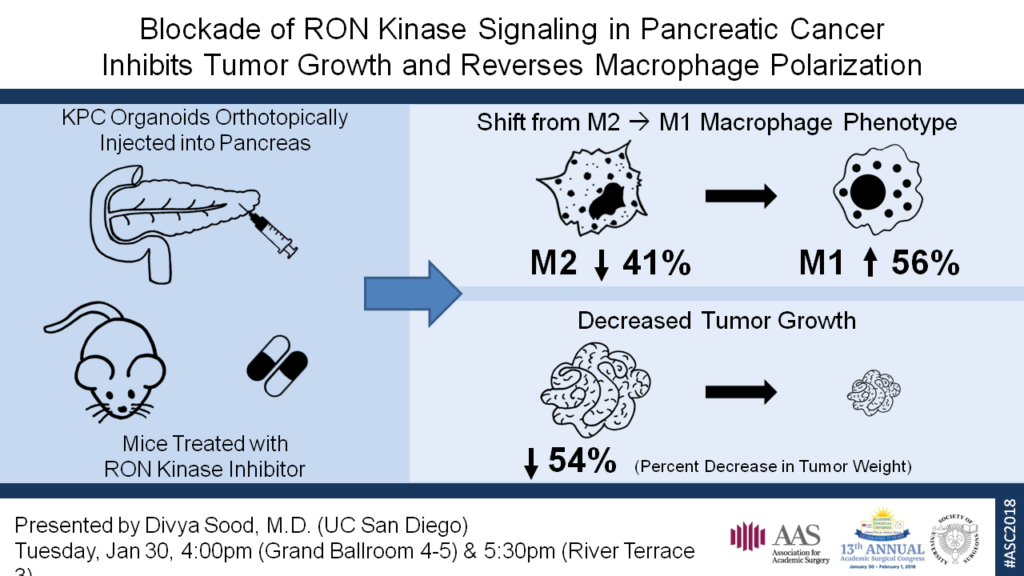A. R. Dosch1, C. Roberts1, M. VanSaun1, S. Banerjee1, P. Lamichhane1, A. Gaidarski1, N. Nagathihalli1, D. Dai1, F. Messaggio1, N. B. Merchant1 1University Of Miami,Department Of Surgical Oncology,Miami, FL, USA
Introduction:
Pancreatic cancer (PDAC) remains a major therapeutic challenge due to its innate and acquired chemoresistance. PDAC tumors are heterogeneous entities which containing tumor cells, immune cells, cancer associated fibroblasts (CAF) and cancer stem cells (CSC). Cytokines produced within the tumor microenvironment (TME) are a prominent mechanism for the activation and maintenance of the CSC phenotype. IL-1α and IL-1β are produced by a variety of cells in the TME, including CAFs and inflammatory cells. These molecules are potent upstream mediators of the transcription factor NF-κB which has been shown to increase PDAC CD133+ overexpression, a marker of CSC differentiation. CD133+ cells confer chemoresistance and promote tumor progression through multiple downstream targets implicated in self-renewal, pluripotency, and epithelial-to-mesenchymal transition (EMT). The purpose of this study is to elucidate the molecular regulation of IL-1 signaling that contributes to the CSC phenotype and mediates therapeutic resistance in PDAC.
Methods:
The role of IL-1α and IL-1β signaling was determined in human PDAC cells lines Capan1, MiaPaCa-2, and Panc-1. Total level of IL-1α/β and expression of IL-1 receptor was determined in vivo in Ptf1acre/+;LSL-KrasG12D/+; Tgfbr2flox/flox (PKT) mice and compared with control tissue using cytokine array kit and immunohistochemistry, respectively. ELISA was used to quantify IL-1α/β expression in PDAC cells, inflammatory cells, and CAFs. Expression of target genes related to pluripotency and EMT were quantified using qPCR. Flow cytometry and immunofluorescence were used to delineate changes in CD133 expression in response to IL-1 treatment.
Results:
Our results demonstrate that CAFs secrete greater amounts of IL-1β compared with tumor cells or tumor associated macrophages. Expression of IL-1R was significantly increased in PDAC tumor cells when compared with normal ductal cells in PKT mice. Exogenous IL-1α and IL-1β stimulation activated the ERK1/2 and NF-κB pathways, which correlated with upregulation of pluripotent gene expression including Sox2, Nanog, Oct4, as well as enhanced transcription of the metastatic gene Snai1. Additionally, IL-1 significantly increased percentage of CD133+ cells in PDAC cell lines. Inhibition of the NF-κB or MEK pathway decreased expression of EMT-related genes, CD133+ cells, and decreased cell invasion.
Conclusion:
The inflammatory cytokines IL-1α and IL-1β regulate pluripotent genes essential for EMT and CSC differentiation in the TME. These data show a novel therapeutic potential of targeting IL-1 signaling through MEK inhibition and/or NF-κB in effectively reversing EMT and reducing the CSC population to enhance therapeutic response in PDAC. These results may broadly applicable to many types of cancers due to the commonality of CSCs and the mechanisms regulating pluripotent gene expression.



